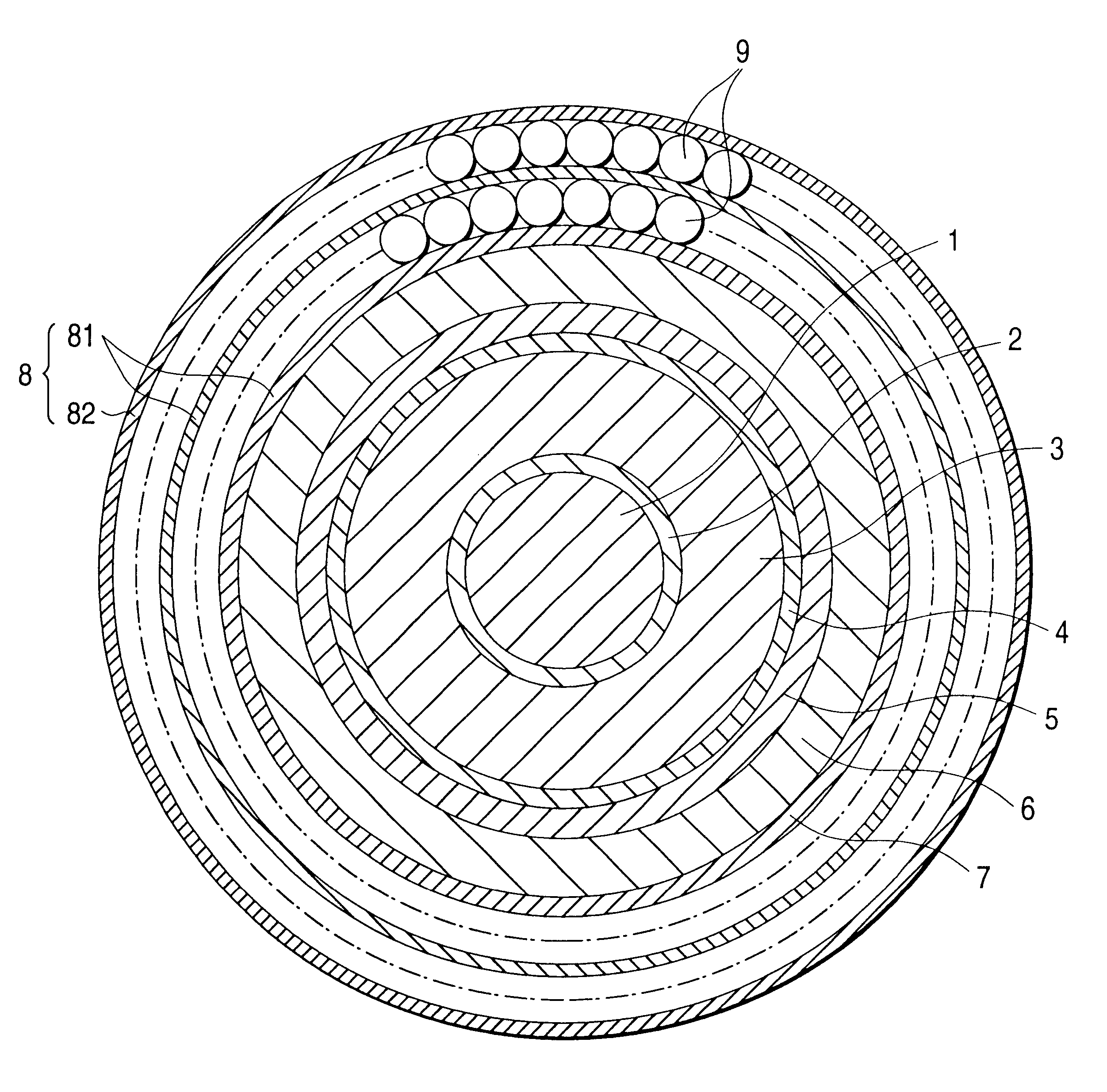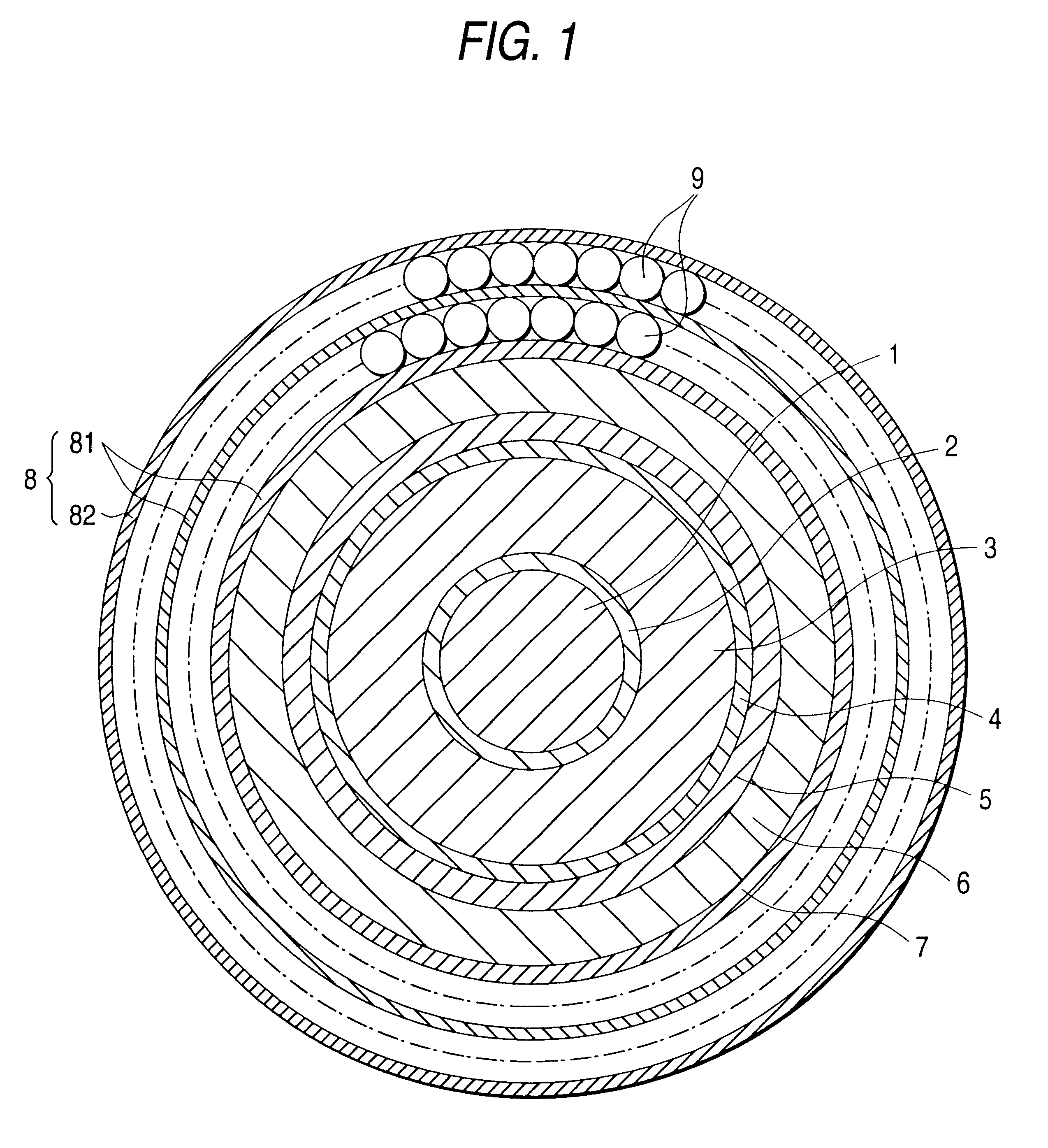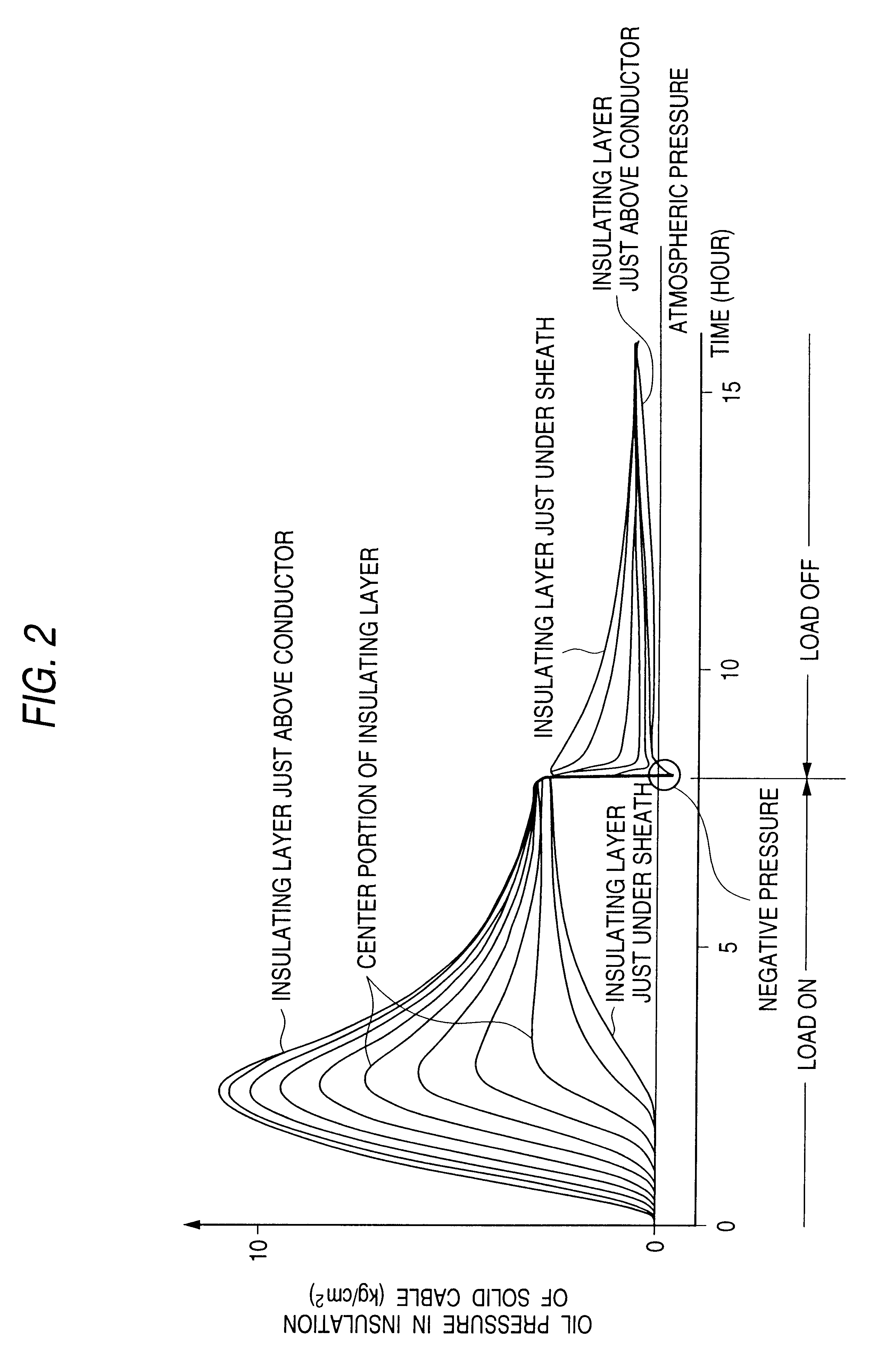Solid cable, manufacturing method thereof, and transmission line therewith
a technology of solid cable and manufacturing method, applied in the direction of power cables, cables, insulated conductors, etc., can solve the problems of reducing the electric performance conspicuously, the cable line is too long to feed or absorb insulating oil at both ends, and cannot be realized
- Summary
- Abstract
- Description
- Claims
- Application Information
AI Technical Summary
Benefits of technology
Problems solved by technology
Method used
Image
Examples
Embodiment Construction
In order to find out insulating oil satisfying the above conditions, the following experiments were performed.
A solid cable with kraft paper insulation in which the insulation thickness was 20 to 25 mm, and which was in the class of 400 to 500 kV, was put in a vessel, and soaked in water. The water pressure was changed to simulate the depth of sea water. The sea-water pressure is expressed by "(water depth (m) divided by 10) (kg / cm.sup.2)".
The structure of the used cable is shown in FIG. 1. FIG. 1 is a cross-sectional view illustrating the structure of an example of a DC submarine solid cable. The cable has, in the order from the center, a conductor 1, an inner semiconductive layer 2, an oil-impregnated insulation layer 3, an outer semiconductive layer 4, a metal sheath 5, an anti-corrosive plastic layer 6, a metal tape 7, a protective yarn layer 8 and wire armoring layers 9.
The oil-impregnated insulation layer 3 is configured in the way that a wound kraft paper tape is impregnated ...
PUM
| Property | Measurement | Unit |
|---|---|---|
| temperature | aaaaa | aaaaa |
| temperature | aaaaa | aaaaa |
| temperature | aaaaa | aaaaa |
Abstract
Description
Claims
Application Information
 Login to View More
Login to View More - R&D
- Intellectual Property
- Life Sciences
- Materials
- Tech Scout
- Unparalleled Data Quality
- Higher Quality Content
- 60% Fewer Hallucinations
Browse by: Latest US Patents, China's latest patents, Technical Efficacy Thesaurus, Application Domain, Technology Topic, Popular Technical Reports.
© 2025 PatSnap. All rights reserved.Legal|Privacy policy|Modern Slavery Act Transparency Statement|Sitemap|About US| Contact US: help@patsnap.com



